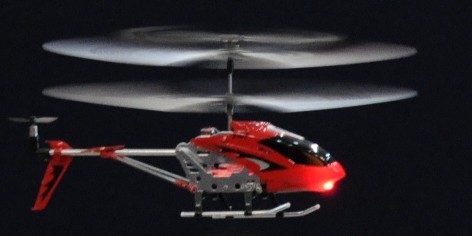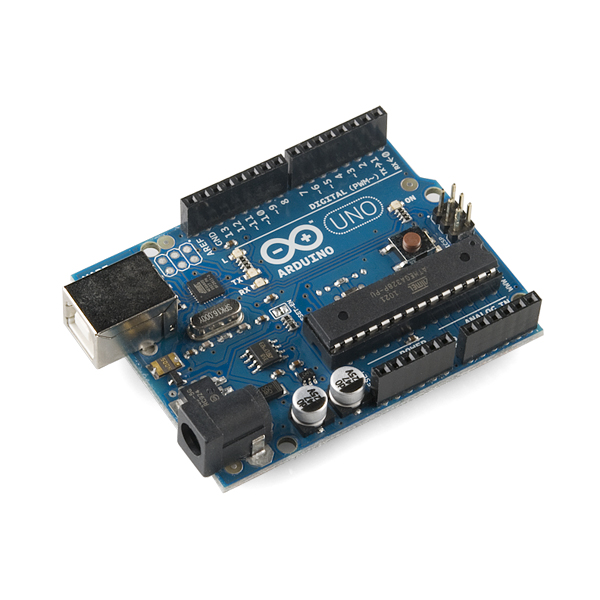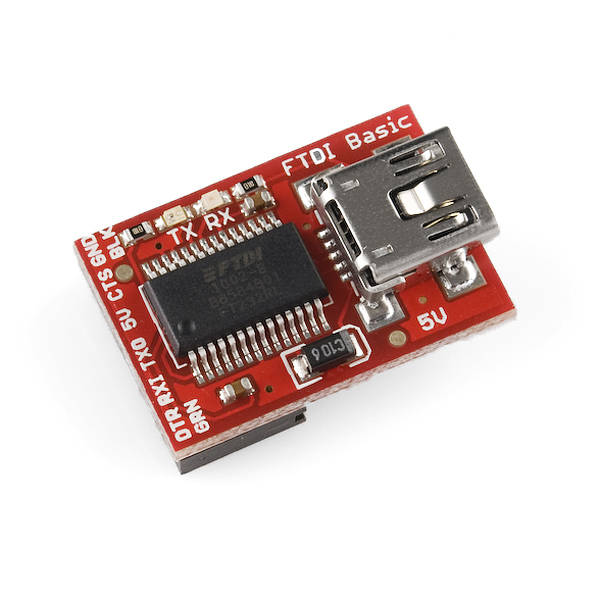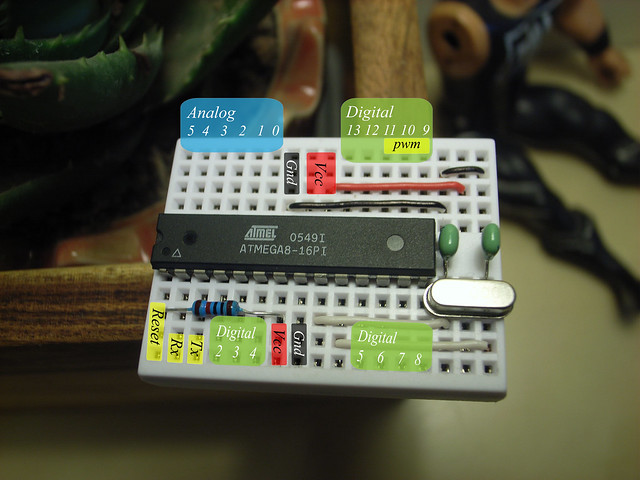- Power input on RAW can be 3.3V - 12V. It will be regulated to 3.3V. Specifically, VCC will be 3.3V
- Power input from the FTDI connector is not regulated. If you are using a 5V FTDI connector VCC will be 5V!
- In general you can get by with using a 5V FTDI cable on a 3.3V Pro Mini. It's out of spec but is generally accepted as working.
- You can't use a 5V FTDI if you are powering a 3.3V device from VCC!
Here's a workaround if you're stuck with a 5V cable and want to use it to power a Mini that has a 3.3V device on VCC.
 Remove the VCC line from the FTDI cable. Gently lift the plastic tab and the wire with attached connector will slide out. If you have an extra single-ping cable protector (take one off a female-female breadboard wire if you've got one) you can insert the VCC connector in there. You could also use some small heatshrink to cover it. You could let it go bare, but be careful not to short it out.
Remove the VCC line from the FTDI cable. Gently lift the plastic tab and the wire with attached connector will slide out. If you have an extra single-ping cable protector (take one off a female-female breadboard wire if you've got one) you can insert the VCC connector in there. You could also use some small heatshrink to cover it. You could let it go bare, but be careful not to short it out. Attach the FTDI cable (minus the removed VCC) to the Pro Mini as usual. Attach FTDI VCC to Pro Mini RAW.
Attach the FTDI cable (minus the removed VCC) to the Pro Mini as usual. Attach FTDI VCC to Pro Mini RAW.
Check the voltage on Pro Mini VCC. It should be 3.3V, regulated by the Pro Mini.
The Sparkfun product page has this note in the comments:
Q: Are the rx/tx lines 5V tolerant? I want to know if it is possible to program this with a 5V FTDI board, without needing to get an additional 3.3V FTDI just for this board.
A: Yes, the only difference in the 3.3V and 5V Pro Minis is the crystal and the voltage regulator. Since the FTDI bypasses the regulator the only difference is the speed the run at. The ATMega328 is fine at 5V. Keep in mind if you have 3.3V on VCC and 5V on the I/O pins that is technically out of spec (you shouldn't put more than VCC on the I/O pins), but will probably work as well. Keep in mind that the 5V FTDI will put 5V on the VCC line, so make sure you don't have any 3.3V only devices connected when you do this.
blogodex = {"toc" = ["FTDI", "Arduino"], "idx" = {"ArrBot", "Electronics", "Voltage", "No Hack Too Cheap"]};




































